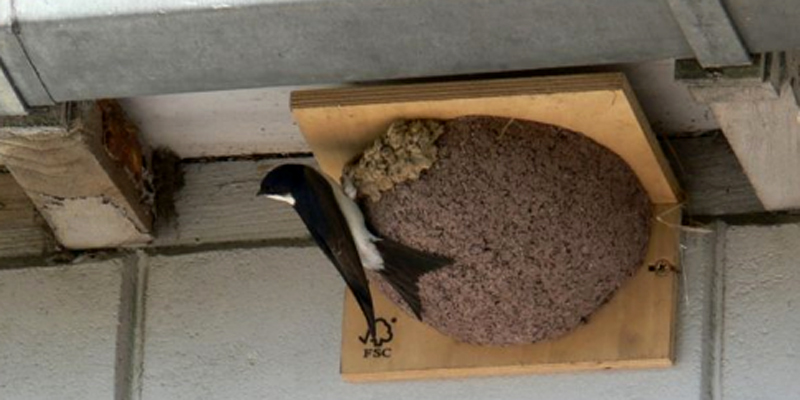Everybody knows those engaging little black and white birds, chirping as they fly back and forwards to their mud nests feeding their tiny chicks which peek out of the corner of the nest. They look like they are watching us passers-by but really they are looking out hungrily for their parents returning with insects, and they are going to need all that energy because when they’re full grown they will fly all the way to West Africa (amazingly, even now the precise location is unknown).
But these lovely birds are in big trouble. There’s been a 65% decline in house martins in England between 1967-2011, particularly in the southern half of Britain, and they are now Amber Listed by the Royal Society for the Protection of Birds (RSPB) and listed by Birdlife International as a species that is globally threatened. So they need all the help they can get.
The British Trust for Ornithology is so worried about them that they are launching a special house martin survey which will run over two years. Next year, volunteers across the UK will survey one km squares, mapping any new sites, and in 2016 there will be a nest monitoring study, which is ideal for those with nests on their property.
The aim is to create a sound base-line of data to help inform conservation action and help us answer key questions: house martins need broad eaves to nest under, but is there a lack of suitable nest-building sites (think of all those plastic eaves and soffits)? Each nest uses 1,000 beak-sized pellets of mud, so are drought and climate change making it harder to find building materials (think of all that patio-isation of front gardens)? And, have changes in local land-use affected insect numbers and led to a food shortage (think of all those pesticides and insecticides being poured on to our farming land and gardens)?
Luckily for us, Rye is something of a hot spot for house martins. The Rye Club in Market Road has a row of nests that see return nesters year after year. One of the residents in Market Street has put up artificial nest cups and has succeeded marvellously in attracting a number of pairs. But the top prize probably goes to Keith Dean’s colony at Udimore, whose sun-facing farmhouse hosts a truly magnificent colony of these magical birds, unique in the area.
So, what can you do? Well, the most important thing is to let our house martins hold on to the nest sites we have, but it would be great if some more people in Rye could put up some more artificial nest cups for the birds. You can get them easily from the RSPB’s website.
Don’t fret about their droppings – collect them for the garden, they are just as good as Growmore, if not better, and come free. Better still, plant your borders below their nests for automatic fertilisation!
Please do support the trust’s house martin appeal: help with surveying and, if you can, donate, too. Go to www.bto.org/house-martin-appeal and get a big Thank you! from all of us trying to help these wonderful birds.
Photo: Edward Mayer. Mayer manages a conservation advice service for swifts and house martins, visit www.swift-conservation.org



